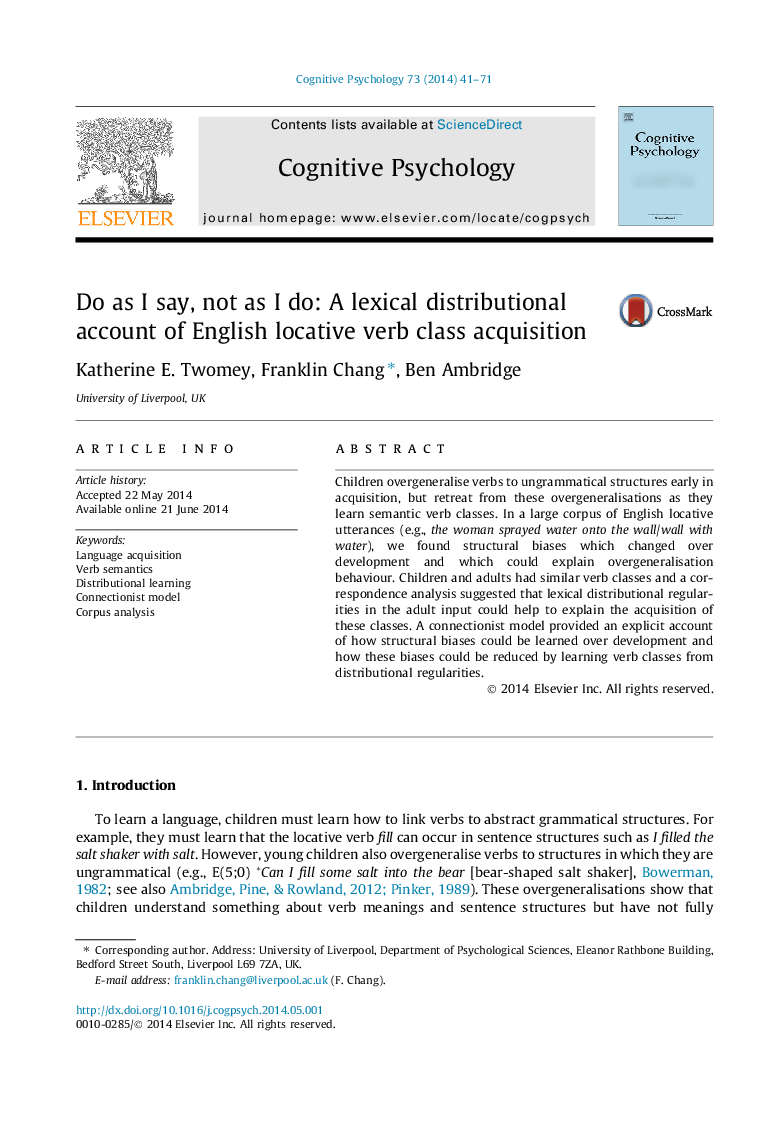| کد مقاله | کد نشریه | سال انتشار | مقاله انگلیسی | نسخه تمام متن |
|---|---|---|---|---|
| 916838 | 1473391 | 2014 | 31 صفحه PDF | دانلود رایگان |
• Corpus study links locative overgeneralisations to change in verb bias over time.
• Distributional correspondence analysis of child input predicts adult verb biases.
• Adults learn novel verbs’ structural biases from purely distributional regularities.
• Connectionist model exhibits early structural biases, overgeneralisation, verb classes.
Children overgeneralise verbs to ungrammatical structures early in acquisition, but retreat from these overgeneralisations as they learn semantic verb classes. In a large corpus of English locative utterances (e.g., the woman sprayed water onto the wall/wall with water), we found structural biases which changed over development and which could explain overgeneralisation behaviour. Children and adults had similar verb classes and a correspondence analysis suggested that lexical distributional regularities in the adult input could help to explain the acquisition of these classes. A connectionist model provided an explicit account of how structural biases could be learned over development and how these biases could be reduced by learning verb classes from distributional regularities.
Journal: Cognitive Psychology - Volume 73, September 2014, Pages 41–71
